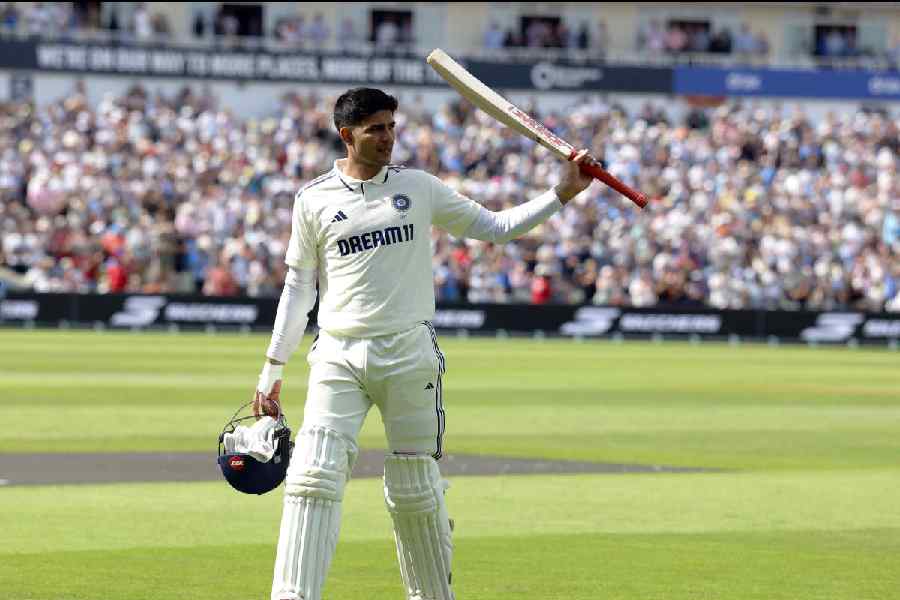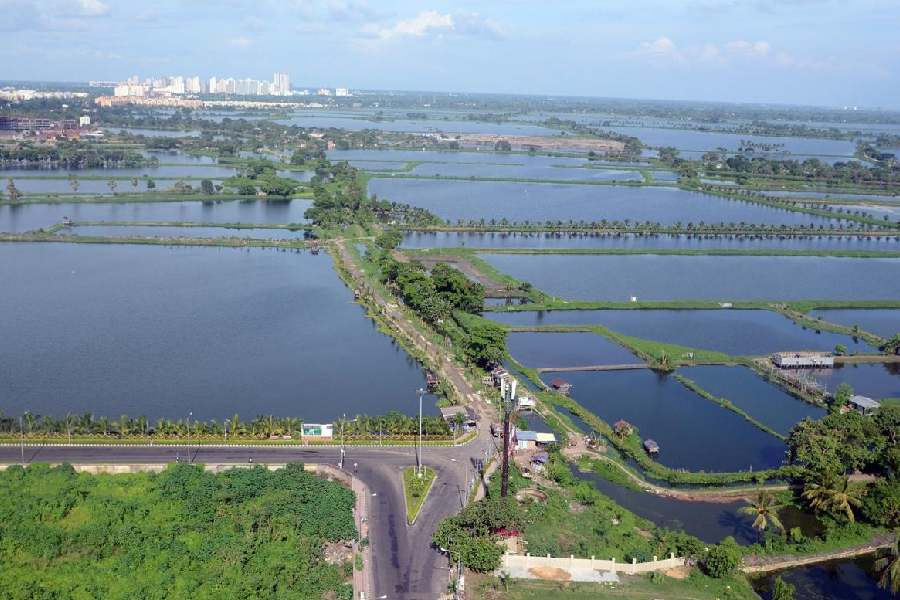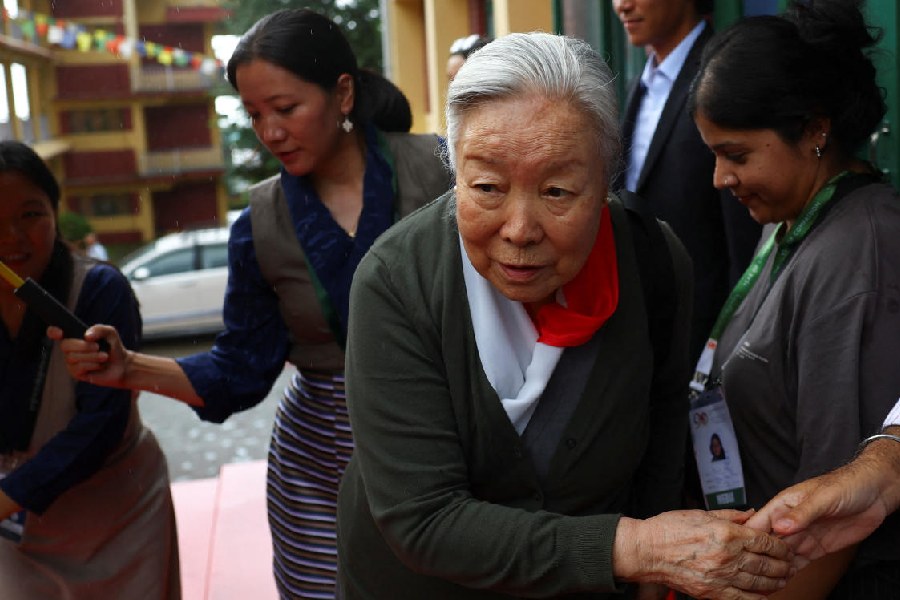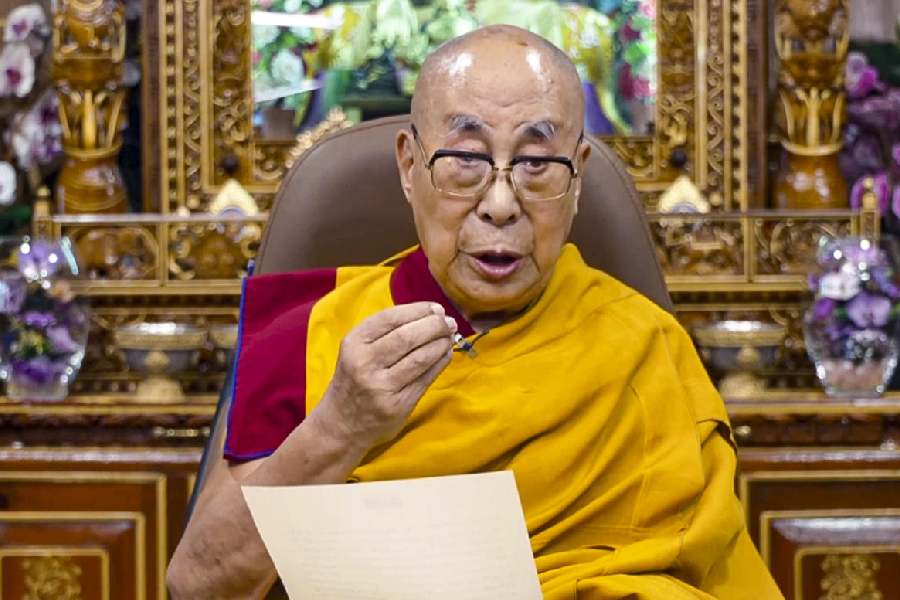 |
Sriharikota, Oct. 22: India took a big leap towards joining a small club of moon explorers today with the launch of its first lunar orbiter, bolstering its credentials as a space-faring nation on a shoestring budget.
India’s Polar Satellite Launch Vehicle ferrying Chandrayaan-1 stirred with a thunderous roar and climbed into the sky, leaving behind a tower-like thick trail of flames and smoke.
About 18 minutes after a perfect lift-off at 0622 hours under an overcast sky, Chandrayaan-1 separated from the PSLV, and slipped into an initial orbit from where it will be nudged towards the moon over the next 15 days.
“Our baby’s on the way to the moon,” Mylswamy Annadurai, the 50-year-old electronics engineer at the Indian Space Research Organisation (Isro) and the chief architect of Chandrayaan-1, said moments after the launch.
“This is a historic moment. We’ve opened a new chapter in the Indian space programme,” said Isro chairman G. Madhavan Nair. “This is the beginning of our journey to unravel the mysteries of the moon.”
The spacecraft with 11 scientific payloads is intended to orbit the moon for two years during which it will map the entire lunar surface in a level of detail never achieved before as well as look for ice and precious minerals.
Only Russia, the US, China, Japan and the European Space Agency (ESA) have sent spacecraft to either orbit or land on the moon. Chandrayaan-1 is carrying three instruments from the ESA, two from the US and one from Bulgaria.
 |
India’s Deep Space Network tracking station with two giant antennas, including a 32-metre diameter dish, near Bangalore, picked up signals from Chandrayaan-1 in the afternoon today, Isro officials told The Telegraph.
“We’ve checked the health of the spacecraft. It is perfect,” Annadurai said.
But India is still at least two weeks away from joining the lunar explorers’ club. After separating from the PSLV, Chandrayaan-1 slipped into an elliptical orbit around Earth. Over the next several days, Isro engineers will fire a rocket on the spacecraft to nudge it further and further away from Earth until it gets captured by the moon’s gravity. If all goes according to plan, it will enter its 100km lunar orbit around November 8.
“We’ll raise the orbit step by step. It’s a complex operation,” Nair said.
The Rs 386-crore mission marks India’s first venture into deep space. All earlier satellites from India — from its mini scientific satellites to telecommunication and weather, and remote sensing satellites — have been Earth orbiters.
Indian space officials have said its space feats have been achieved on a shoestring budget. India’s annual space outlay is about $1 billion in contrast to Nasa’s annual budgets of about or over $15 billion over the past five years. The European Space Agency budget last year was 2.9 billion euros.
Space scientists believe the lunar orbiter mission would fuel enthusiasm for future science missions and even manned space missions by India. India has begun work on a space capsule that would take two astronauts into a low-Earth orbit, Nair said.
He indicated that India would be in a position to launch a manned space mission by 2015 at a cost of about Rs 12,000 crore. The biggest challenge will be to develop life-support systems for humans, an area in which India has no expertise. The safety and reliability of the launch vehicle would also have to be enhanced.










